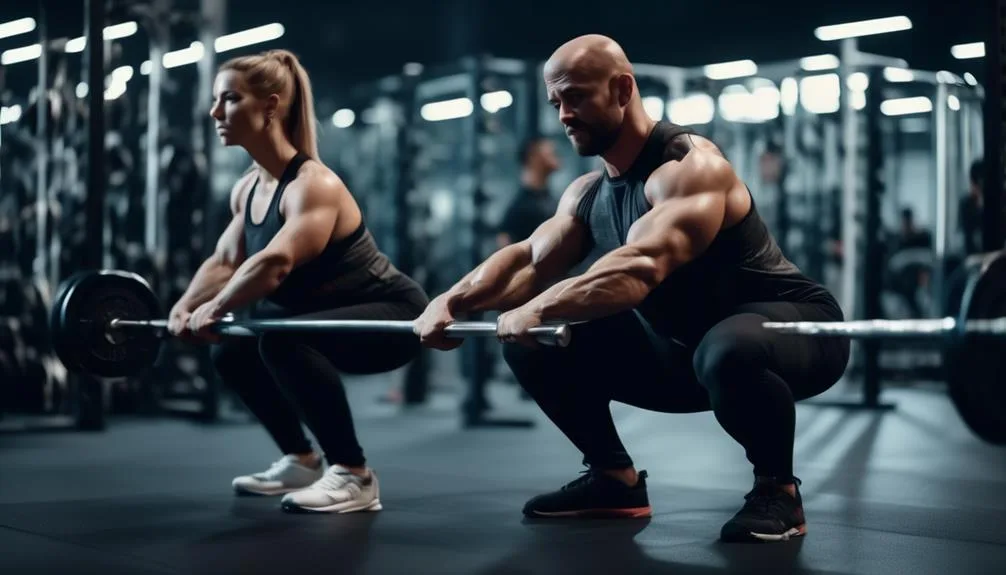In the realm of fitness and physical wellness, the deep squat emerges as a pivotal exercise, often overshadowed by more conventional routines, yet it harbors untapped potential for enhancing bodily strength, flexibility, and overall health.
This compound movement, engaging a multitude of muscle groups from the core to the lower extremities, not only fortifies the body against injuries but also significantly improves mobility and functional performance.
Despite its considerable benefits, mastering the deep squat poses a challenge to many, attributed to common issues such as inadequate flexibility, strength deficits, and balance difficulties. However, through the application of meticulous technique and tailored modifications, these hurdles can be surmounted, unlocking the comprehensive advantages of this exercise.
Insights from Dean Pohlman, an esteemed figure in integrating yoga with physical training, further illuminate the path to optimizing the execution of deep squats.
As we explore the intricate dynamics of this powerful movement, an understanding of its foundational principles and the strategies to overcome prevalent obstacles will emerge, offering a new perspective on achieving peak physical condition.
Key Takeaways
- Deep squats are beneficial for building core and hip strength, improving mobility, and preventing pain or injury.
- Common challenges of deep squats include limited mobility, lack of strength, balance issues, muscle imbalances, fear, and mental barriers.
- To perform a deep squat, stand with feet shoulder-width apart, lower hips down and back while keeping chest upright, and press down through heels, balls of feet, and toes.
- If struggling to maintain upright posture, it is possible to hold onto a sturdy support and lean back to sit deeper in the squat.
Deep Squat Essentials
Mastering the deep squat requires not only physical strength and flexibility but also a keen understanding of the essential techniques and modifications that can enhance performance and safety.
One key to unlocking the full potential of this powerful exercise is recognizing and correcting common mistakes. Often, individuals may compromise their form by not maintaining a slight arch in the lower back or by allowing their knees to cave inward. Addressing these errors can dramatically improve the effectiveness of the squat.
Additionally, exploring advanced variations of the deep squat can challenge the body in new ways, fostering greater strength and mobility. Embracing these essentials empowers enthusiasts to safely push their limits, ensuring continuous progress and the avoidance of injury.
Perfecting Your Technique

To elevate the efficacy of your deep squat, refining your technique is imperative, ensuring each movement is executed with precision and control. Improving form and increasing flexibility are critical steps in your journey towards mastery. Let this guide serve as your compass.
| Focus Area | Action Step | Benefit |
|---|---|---|
| Stance | Feet shoulder-width, toes slightly out | Foundation for balance and strength |
| Core Engagement | Tighten abdominals, slightly arch lower back | Protects spine, enhances control |
| Descent Control | Lower slowly, maintain upright chest | Increases muscle engagement |
| Flexibility | Incorporate mobility exercises daily | Improves depth, reduces injury risk |
| Consistency | Practice regularly, adjust as needed | Accelerates progress, solidifies form |
Embrace these pillars of technique to transform your deep squat experience.
Overcoming Common Challenges

Navigating the path to a perfect deep squat often involves overcoming a variety of common challenges, from limited mobility to balance issues. The journey towards mastering this exercise is not just about persistence but also about understanding and methodically addressing the obstacles in your way.
Strengthening muscles plays a crucial role in this process. By focusing on building strength in your core, glutes, and legs, you not only enhance your stability but also make significant strides in performing deep squats more effectively.
Improving flexibility is equally important. Incorporating dynamic stretches and mobility exercises into your routine can greatly reduce stiffness, allowing for a deeper range of motion.
Modification Strategies

How can individuals who encounter difficulty with traditional deep squats make effective modifications to enhance their form and reduce the risk of injury?
One transformative approach involves Deep Squat Modifications: Using Props and Chair Assistance. This method encourages the use of stable objects or a chair to support and guide the movement, ensuring alignment and stability throughout the squat.
Additionally, focusing on Deep Squat Modifications: Ankle Mobility, Hip Mobility can significantly improve one's squat depth and form. By incorporating exercises that enhance flexibility and strength in these areas, individuals can achieve a more comfortable, deeper squat position without compromising safety.
These targeted modifications are designed to empower those facing challenges, enabling a progression towards mastering the deep squat with confidence and strength.
Deep Squat Benefits

Building on the foundation of effective modifications and improved form, exploring the benefits of deep squats unveils their significant impact on overall fitness and well-being.
Incorporating deep squat variations and progressions into your fitness regimen can lead to remarkable improvements in strength, mobility, and functional performance.
These exercises not only engage the major muscle groups of the lower body, including the glutes, quads, and hamstrings but also challenge the core, enhancing stability and balance.
By methodically advancing through deep squat progressions, individuals can gradually increase their squat depth, ensuring a safe and effective enhancement of physical capabilities.
This approach fosters a sense of accomplishment, motivating continued effort and dedication towards achieving peak physical condition.
Frequently Asked Questions
How Does the Frequency of Deep Squat Exercises Impact Their Effectiveness for Long-Term Mobility and Strength?"
The effectiveness of deep squat exercises for enhancing long-term mobility and strength significantly depends on training frequency. Incorporating various squat variations systematically can optimize results, encouraging progressive muscle engagement and joint flexibility.
Can Deep Squats Help Alleviate Symptoms of Specific Medical Conditions, Such as Knee Osteoarthritis or Lower Back Pain?"
Deep squats, when executed correctly, can significantly alleviate symptoms of knee osteoarthritis and lower back pain by enhancing joint lubrication and flexibility. This methodical approach offers a promising avenue for those seeking relief and improvement.
What Are the Comparative Advantages of Deep Squats Over Other Types of Squats, Such as Sumo Squats or Front Squats, in Terms of Muscle Engagement and Athletic Performance?"
Comparative advantages of deep squats over variations like sumo or front squats include superior muscle engagement, notably in the posterior chain, and enhanced athletic performance due to improved flexibility benefits, promoting overall strength and mobility.
How Can Deep Squats Be Safely Incorporated Into a Rehabilitation Program Following a Lower Body Injury?"
Deep squats, when incorporated into a rehabilitation program post-lower body injury, can significantly reduce injury risk and meet rehabilitation goals. Methodically progressing with professional guidance ensures a safe, effective recovery journey, enhancing mobility and strength.
What Role Do Deep Squats Play in Enhancing Functional Movements in Everyday Life and Sports Performance, and How Can This Influence an Individual's Training Regimen?"
Deep squats enhance functional movements, crucial for everyday activities and sports, by improving joint health and balance. Incorporating them into training regimens can significantly elevate physical performance and promote long-term mobility and stability.
Conclusion
In the realm of physical fitness, the deep squat emerges as a pivotal exercise, offering a plethora of health benefits ranging from core strengthening to enhanced mobility.
While challenges such as limited mobility and balance issues may present hurdles, the adoption of correct techniques and modifications ensures these can be surmounted.
The journey to mastering the deep squat is not only a testament to physical prowess but also a gateway to unlocking unprecedented levels of physical health and performance.
The question remains: will one rise to the challenge?

